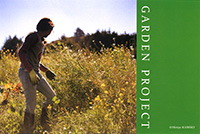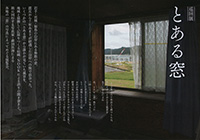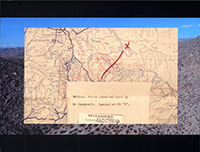 |
Picks is a monthly sampling of Japan's art scene, offering commentary by a variety of reviewers about exhibitions at museums and galleries in recent weeks, with an emphasis on contemporary art by young artists. |
 |
 |
|
|
 |
|
| Hiroyo Kaneko: Garden Project |
| 2 - 20 April 2019 |
Gallery Mestalla
(Tokyo) |
 |
| The Garden Project was a farming NPO founded in San Francisco in 1992 by lawyer Cathrine Sneed to provide work for low-income and minority people and contribute to the local community by growing organic vegetables and flowers. Kaneko's photo-documentary of the project, which ended in 2018, eloquently expresses, in her words, "the natural energy we receive from light and wind, trees and flowers, and the land." These scenes of people of diverse backgrounds working together in a natural setting are imbued with an almost mystical serenity. |
|
|
 |
 |
|
| Sakae Ishida: To Work Is To Live: Kochi in the Showa 30s |
| 2 April - 6 May 2019 |
JCII Photo Salon
(Tokyo) |
 |
| Born in 1926 in Kagawa Prefecture on the island of Shikoku, Ishida served in the Japanese Navy during World War II, then found employment at a farming equipment company in neighboring Kochi Prefecture. At some point he acquired a German camera with which he began photographing local people at work. His portfolio is an invaluable record of people engaged in manual labor in circumstances that have all but disappeared in Japan today. |
|
|

|
 |
 |
|
 |
 |
 |
| Keiko Nomura: Otari - Pristine Peaks |
| 16 March - 13 April 2019 |
Kanzan Gallery
(Tokyo) |
 |
| Nomura photographed people hunting, holding festivals, and otherwise engaging in daily life in Otari, a village in the mountains of Nagano Prefecture known for its deep snows -- shooting, she says, "while quietly taking in the sensations and emotions that arise." The images perfectly fit the exhibition concept of "Emotional Photography." Many feature a young woman as she goes through pregnancy and childbirth, a theme that sets Nomura's series apart from other documentaries of mountain village life. |
|
|
|
|
|
|
|

|
 |
 |
 |
 |
| Certain Windows |
| 15 - 31 March 2019 |
Jodo Fukugoh
(Kyoto) |
 |
| The latest iteration of this traveling installation juxtaposes views from windows along the coasts of Iwate, Miyagi and Fukushima Prefectures -- captured by photographer Tomomi Morita seven years after the region was devastated by the earthquake and tsunami of 2011 -- with oral accounts by local people recorded by the NOOK research group. Each photo is accompanied by a text that brings to life the dialect of these anonymous witnesses, conjuring up in the viewer's mind the landscapes seen -- or once seen -- from these windows.
|
|
|
 |
 |
| Sotaro Kikuchi: Wisma Kuwera |
| 26 March - 3 April 2019 |
Turnaround
(Miyagi) |
 |
| Wisma Kuwera is the name of the Yogyakarta residence that the charismatic Indonesian architect Y.B. Mangunwijaya (1929-1999, a.k.a. Romo Mangun) designed for himself. Designer Kikuchi's fascination with unplanned, "self-propagating" architecture prompted him to create this imaginative installation of photographs and memories chronicling the evolution of Wisma Kuwera, where he stayed for a time while an exchange student in Indonesia. His thesis for a master's degree in design records the changes he witnessed in the structure and explores how to give visible form to that spatial experience. |
|

|
 |
 |
 |
 |
|
| Kota Takeuchi: Blind Bombing |
| 8 March - 13 April 2019 |
Snow Contemporary
(Tokyo) |
 |
| As the end of World War II drew near, Japan sent a large number of balloon bombs wafting toward the west coast of the United States. Since the bombs were simply attached to 10-meter paper balloons borne on prevailing winds, there was no way to ascertain whether they had reached their destination or caused any damage; in the words of the artist, this was "blind bombing." To research the episode, Takeuchi studied materials in the U.S. National Archives, interviewed witnesses to the balloons, visited landing sites, and used a drone to trace the bombs' final trajectories and film the landscapes they "saw." |
|
|
 |
 |
 |
| Yoshiyuki Okuyama: White Light |
| 7 March - 15 April 2019 |
Canon Gallery S
(Tokyo) |
 |
| At the entrance to the gallery, each visitor was handed a small flashlight. The gallery was pitch black, so one needed the flashlight to see the photos, precisely as Okuyama intended. In his words, contemporary society increasingly "exposes all there is to know, not only about our environments but about ourselves," a condition that renders many things "invisible among the visible." The unusual format of this show was the product of his belief that making the works difficult to see would sharpen viewers' scrutiny of them. |
|
|
|
|
|
|
|
|
|
 |
|